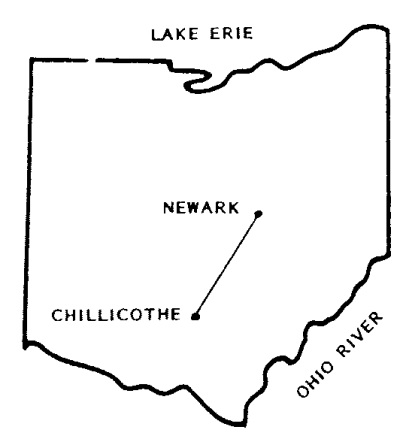 |
Science Frontiers ONLINE No. 127: Jan-Feb 2000 |
|
|
The Great Hopewell Road
 Ancient peoples had a thing about processional roads; that is, roads used for rituals rather than commerce or simply getting from one place to another. In
Britain, for example, there are the grand processional avenues at Avebury and the longer, wider Icknield Way. In South America, the famed Inca roads were
preceded by thoroughfares 100feet wide that had no obvious practical purpose. The hundreds of miles of unnecessarily straight roads leading to Chaco Canyon
in New Mexico seem to have been primarily for pilgrims making ritual treks to the great ceremonial complex in the canyon.
Ancient peoples had a thing about processional roads; that is, roads used for rituals rather than commerce or simply getting from one place to another. In
Britain, for example, there are the grand processional avenues at Avebury and the longer, wider Icknield Way. In South America, the famed Inca roads were
preceded by thoroughfares 100feet wide that had no obvious practical purpose. The hundreds of miles of unnecessarily straight roads leading to Chaco Canyon
in New Mexico seem to have been primarily for pilgrims making ritual treks to the great ceremonial complex in the canyon.
Did the Indians east of the Rockies construct special roads for ritual processions? We do know of the Mohawk Trail, the Virginia Warriors Trail, and other utilitarian roads through the wilderness. And before the settlers plowed them up, there were travel-worn trails six feet deep in the earth of Iowa. Now, we learn that, indeed, the Hopewell Culture may have built a long road mainly for ritual processions.
It is called the Great Hopewell Road, and it is thought to connect the Hopewell centers at Newark and Chillicothe -- a distance of 60 miles through the heart of Ohio.
In 1862, the first 6 miles of this controversial road, marked by parallel earthen banks, were surveyed by two brothers, C. and J. Salisbury. They noted that the road extended much farther in the direction of Chillicothe. B. Lepper, a present-day champion of the Great Hopewell Road, claims that there are still traces of the road remaining at four additional places along the 60-mile line connecting Newark and Chillicothe. Skeptics do not question that the sophisticated Hopewell Culture (circa 200 B.C. to 400 A.D.) was capable of constructing such a road, nor do they contest the 1862 survey covering the first 6 miles. They doubt the existence of the last 54 miles.
(Hicks, Ronald; "The Great Hopewell Mystery," Archaeology, 52:76, November/December 1999.)